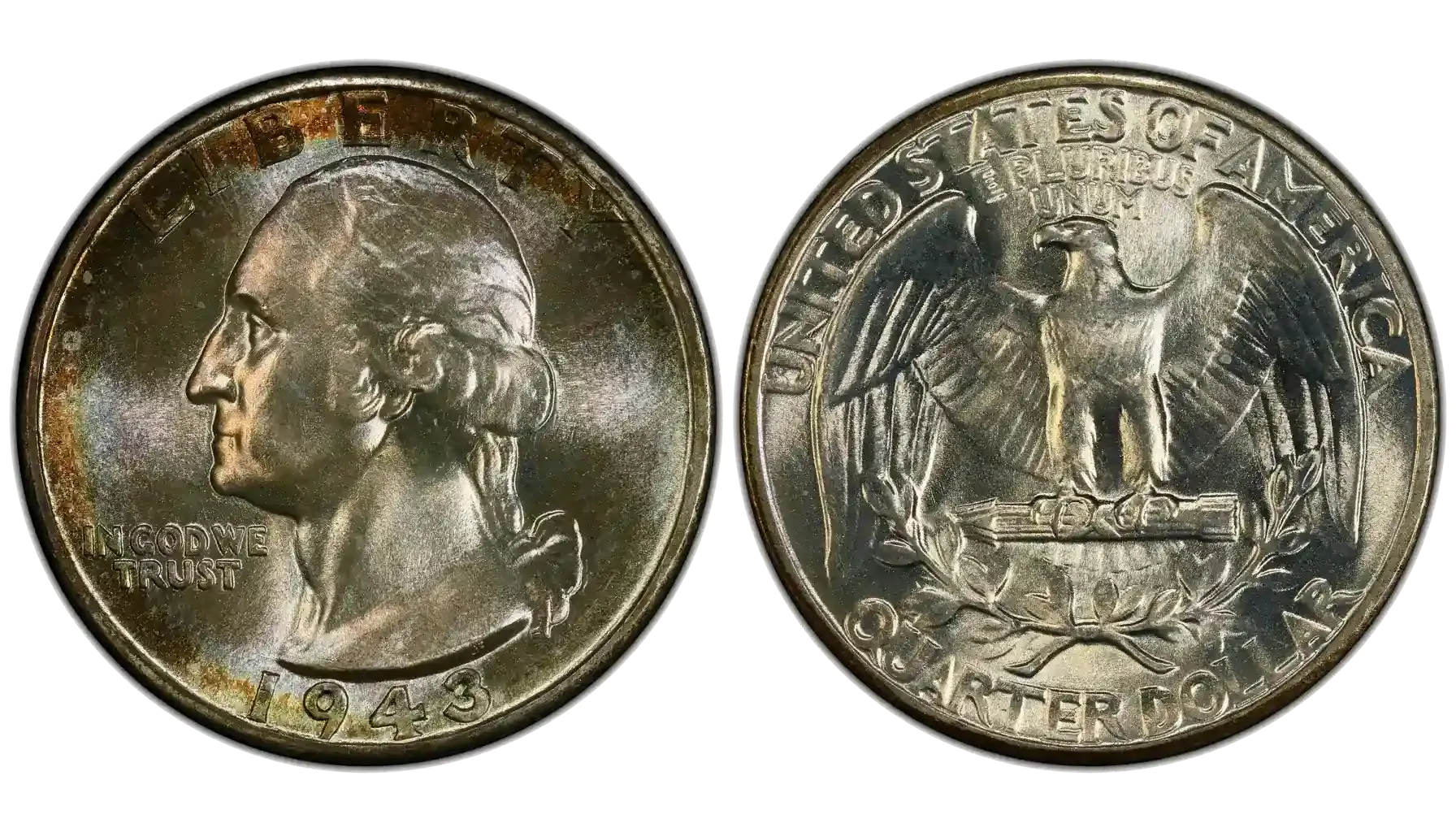Contents:
Have you ever held a coin and wondered about its history? One particular coin—the 1974 US penny—carries a long but really interesting story. There are many of this kind, e.g., the one cent 1974 D, the 1974 no mint mark penny, or even the rare 1974penny that can be compared with the 3-Legged Buffalo nickel. These coins aren't just pocket change.
Some of these pennies, like the 1974 no mint penny, are more than what they appear - they carry both historical and monetary value. But why is the 1974 penny no mint mark so desirable by many numismatists? And how does the one cent 1974 precio vary depending on where it was minted? Today you’ll get your answers to all the questions you have.
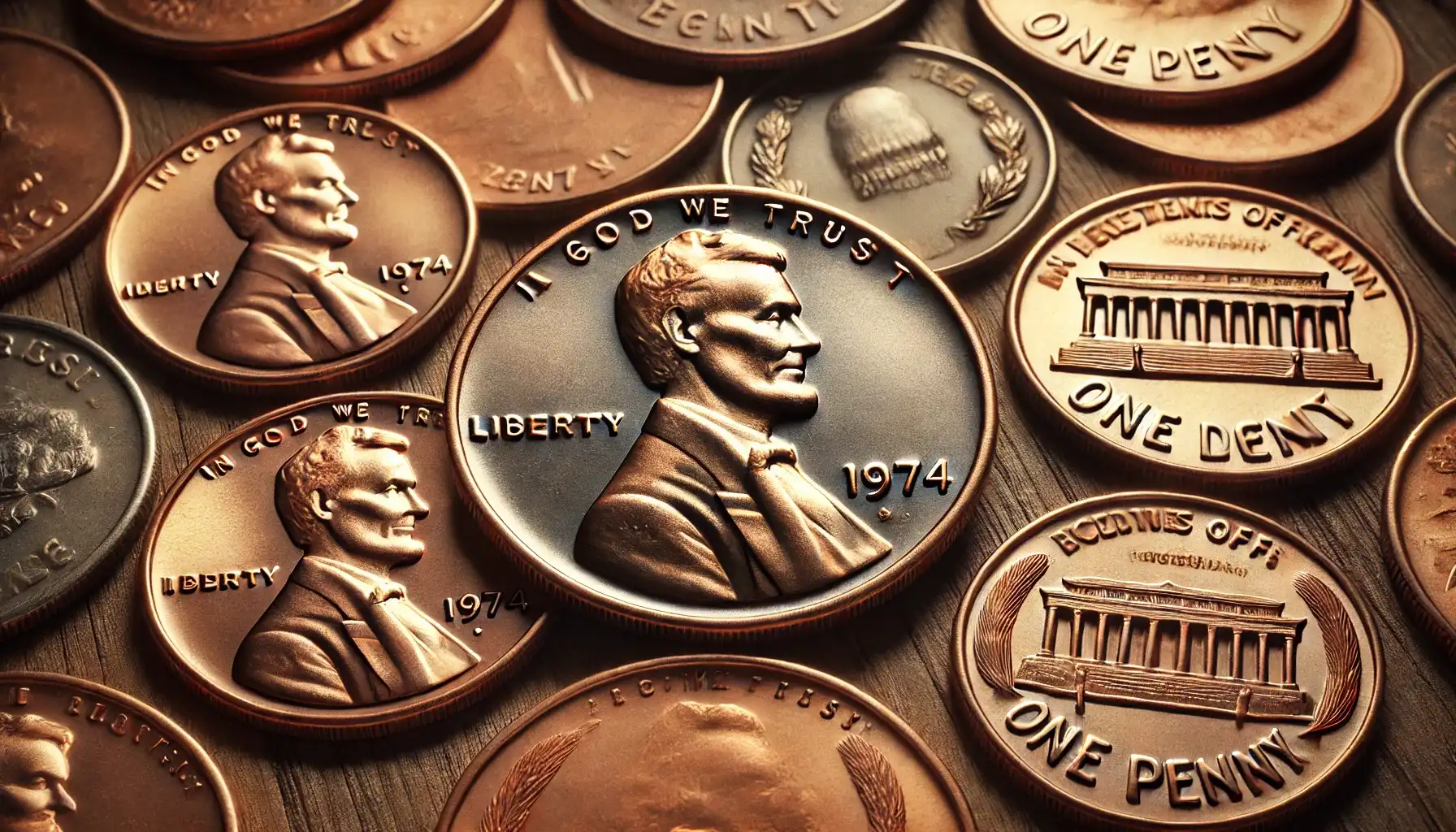
What’s Special About the 1974 Penny?
At first glance, the 1974 cent might look like any other coin in your pocket, but it has some unique characteristics. During that year, the US Mint produced different versions of the coin: the 1974 D penny, 1974 Lincoln penny no mint mark, and the extremely rare 1974 no mint mark penny.
These variations are still very popular among collectors, especially because of the changes in metal composition and production decisions that took place in the early 1970s. And if you’re lucky enough to find one of these rarities, the valuable 1974 penny value could surprise you!
Here is a table that shows the mintages for different types:
Year | Mint Mark | Mintage (Approx.) |
1974 | No Mint Mark | 4,232,140,000 |
1974 | D (Denver) | 4,235,098,000 |
1974 | S (San Francisco) | 412,039,000 |
1974 | Aluminum (Experimental) | 1,570,000 (Not Circulated) |
This table provides a snapshot of the various mintages, including the rare experimental 1974 aluminum penny, which never made it into circulation.
The Aluminum Penny Experiment
Is a 1974 penny worth $2 million? In response to rising copper prices in the early '70s, the US Mint explored making pennies out of aluminum instead of copper. Though 1.6 million aluminum pennies were minted, none ever officially entered circulation. The experiment was short-lived, but it left behind stories of rare, collectible coins that never fully reached the public. For example, the 1 cent 1974 D or the 1974 no mint mark penny might seem commonplace, but they could be part of a larger historical context where the US was reconsidering its currency.
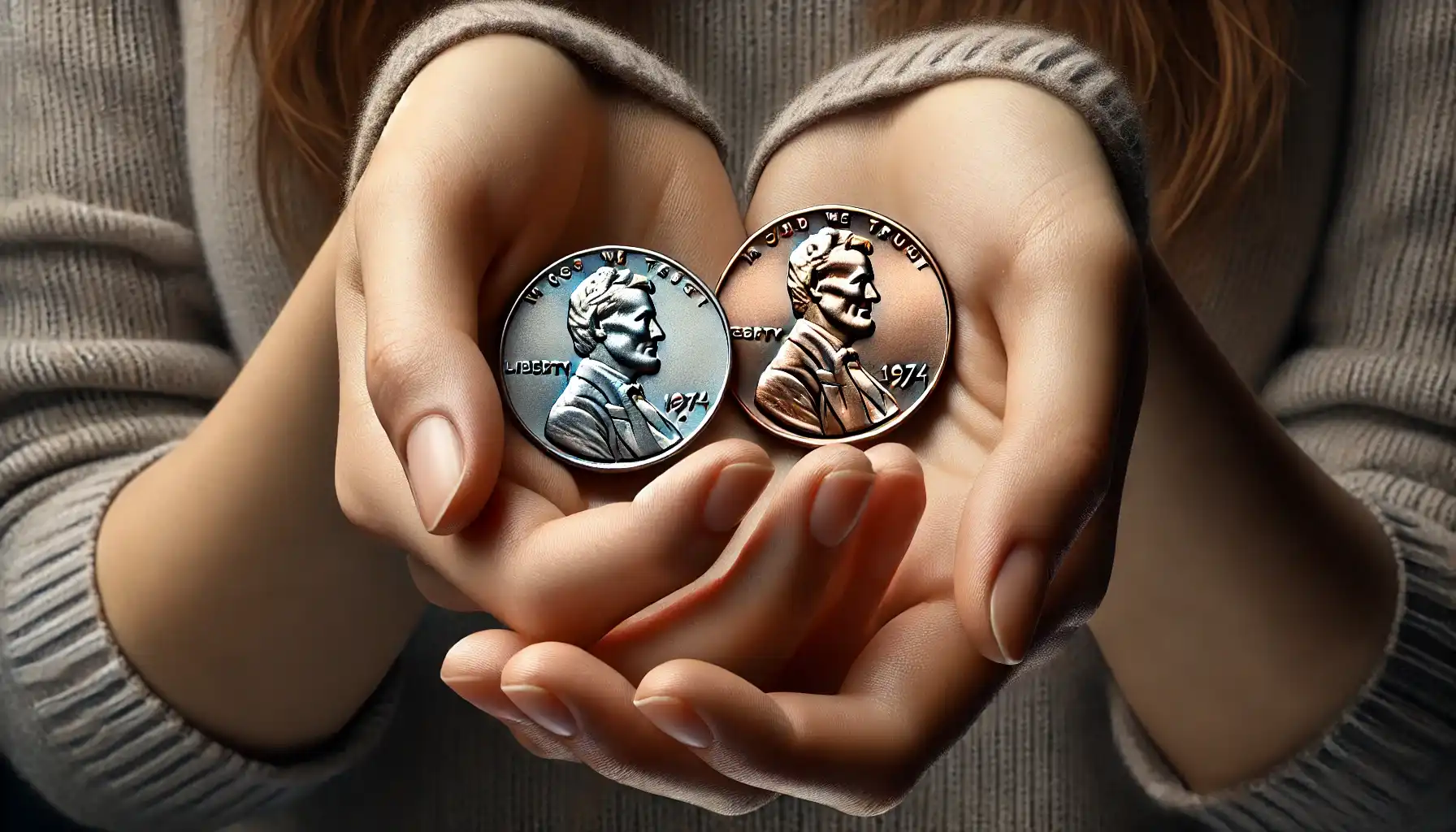
Why Are 1974 Pennies So Collectible?
There’s something about the 1974 penny D and the 1974 no mint mark penny that makes collectors adore these coins. It’s not only the usual composition of copper and zinc - these coins represent a time when the US Mint experimented and dealt with economic pressures. Their historical significance is the reason for their popularity. The 1974 penny no mint mark value can depend on its condition and rarity. For instance, the rare penny 1974 has its own place in history that makes it highly collectible.
Collectible Pennies What to Look For
Here’s what makes certain pennies from 1974 stand out:
1974 D Penny: Produced at the Denver Mint, this coin carries a "D" mark. These pennies are common, but certain versions, like high-grade uncirculated ones, are sought after by collectors.
1974 No Mint Mark Penny: These pennies were produced in Philadelphia and don't have a mint mark, which leads to their nickname "no mint mark." The 1974 penny no mint mark value can vary, especially for uncirculated or rare error coins.
1974 No Mint Mark Penny Value: Some versions, like high-quality or error coins, can be worth much more than face value.
Rare Penny 1974: While the aluminum one is the rarest, even copper pennies from this year can be valuable depending on their condition. The 1974 no mint mark penny could be one of these rarities, with values skyrocketing at auctions.
1 Cent 1974: Standard, circulated pennies from this year might not fetch much at first glance, but pristine or rare error coins could bring in significant value.
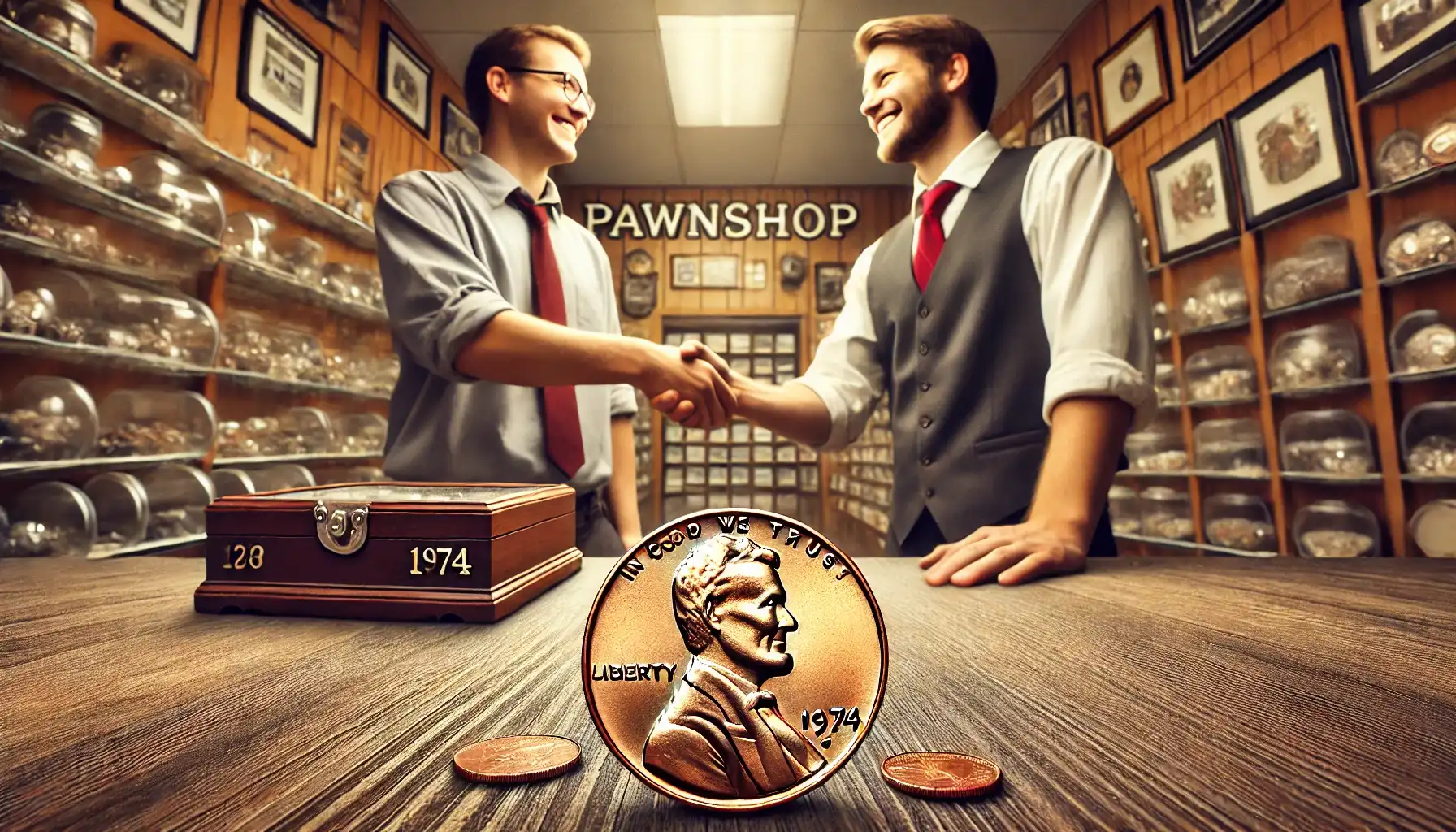
The Value of a 1974 Penny
You might be wondering if you want to sell your coin: What is the valuable 1974 penny value? A typical 1974 coin may not seem worth much, but there are a few special cases. For example, if you happen to find a 1974 penny no mint mark, its value could go up to hundreds or even thousands of dollars. The 1974 Lincoln penny no mint mark is one of the most interesting because it doesn’t have the usual mint mark, which collectors prize.
If you're lucky enough to have a 1974 penny D in excellent condition or an error coin, you might just have a piece of history in your hands. And this history may cost differently - even the 1974 no mint mark penny value can vary because of the condition.
Coin Type | Mint Mark | Good (G-4) | Fine (F-12) | Extra Fine (EF-40) | Uncirculated (MS-63) | Proof (PR-65) |
1974 Lincoln | None | $0.01 | $0.02 | $0.05 | $0.30 | N/A |
1974-D Lincoln | D | $0.01 | $0.02 | $0.05 | $0.30 | N/A |
1974-S Lincoln | S | $0.01 | $0.02 | $0.10 | $0.50 | N/A |
1974-S Proof | S | N/A | N/A | N/A | N/A | $1.50 |
1974 Doubled Die | D/S/None | Varies | Varies | Varies | Up to $50 | N/A |
1974 Aluminum | Various | N/A | N/A | N/A | Priceless | N/A |
Values are approximate and can fluctuate based on the coin's condition and current market demand.
1. 1974 Lincoln Penny (No Mint Mark)
Auction record: $2,938
Mint: Philadelphia
Metal: 95% Copper, 5% Zinc
Weight: 3.11 grams
Diameter: 19.00 millimeters
They were struck in the heart of Philadelphia. These pennies lack a mint mark but are rich in history. They are common in circulation, and finding one in mint-state condition is rather difficult.
Why It's Special: Philadelphia pennies are the backbone of U.S. coinage. Collectors cherish uncirculated pieces for their shine and details.
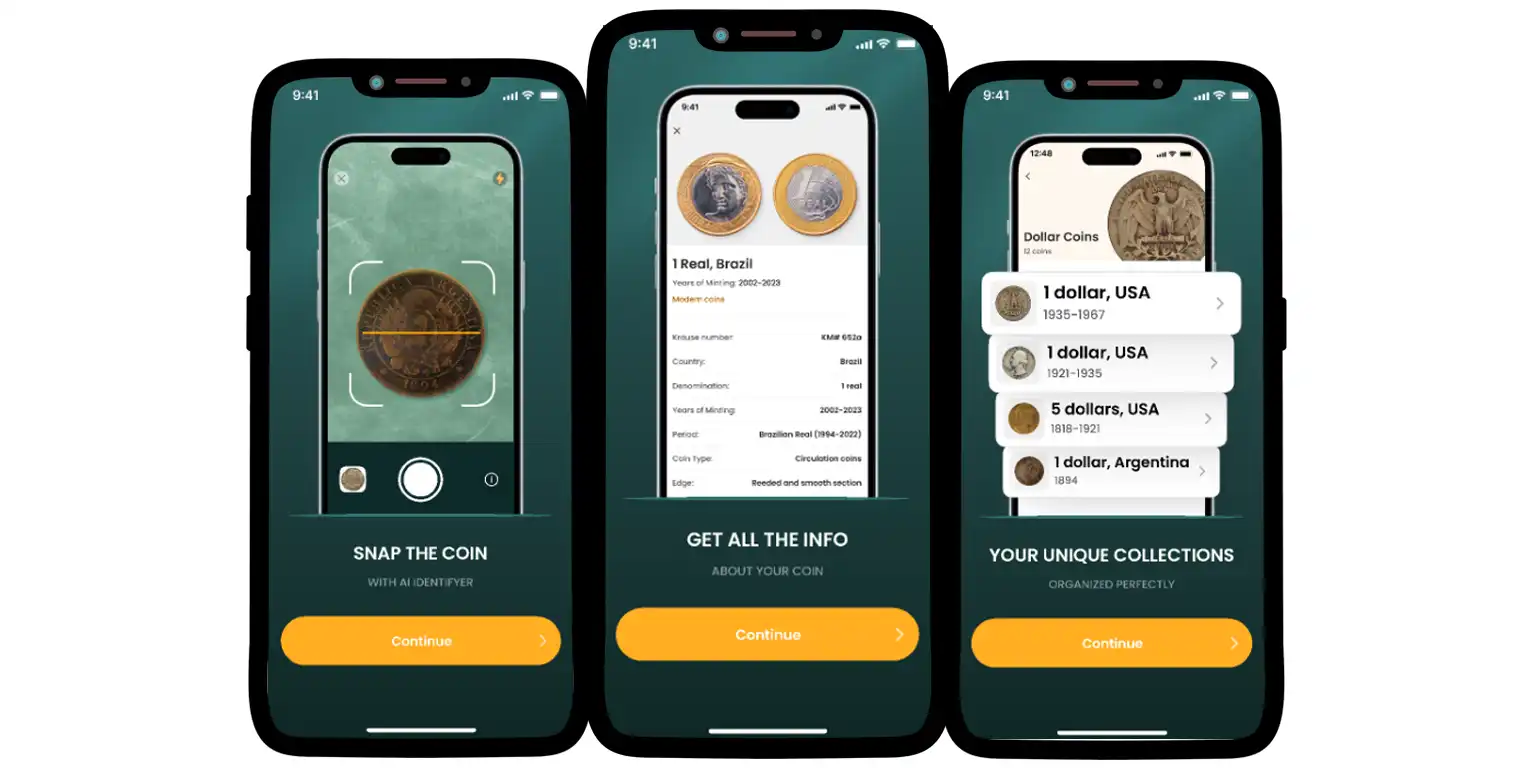
2. 1974-D Lincoln Penny
Auction Record: $950
Mint: Denver
Metal: 95% Copper, 5% Zinc
Weight: 3.11 grams
Diameter: 19.00 millimeters
Bearing the 'D' mint mark, these coins hail from the Denver Mint, known for its high-quality strikes.
Why It's Special: The Denver Mint produced a hefty number of pennies in 1974, but coins with exceptional eye appeal can command higher prices among people.

3. 1974-S Lincoln Penny
Auction Record: $2,703
Mint: San Francisco
Metal: 95% Copper, 5% Zinc
Weight: 3.11 grams
Diameter: 19.00 millimeters
Coins with the 'S' mint mark come from the San Francisco Mint.
Why It's Special: Lower mintage numbers compared to Philadelphia and Denver make these pennies collectible, especially in higher grades.
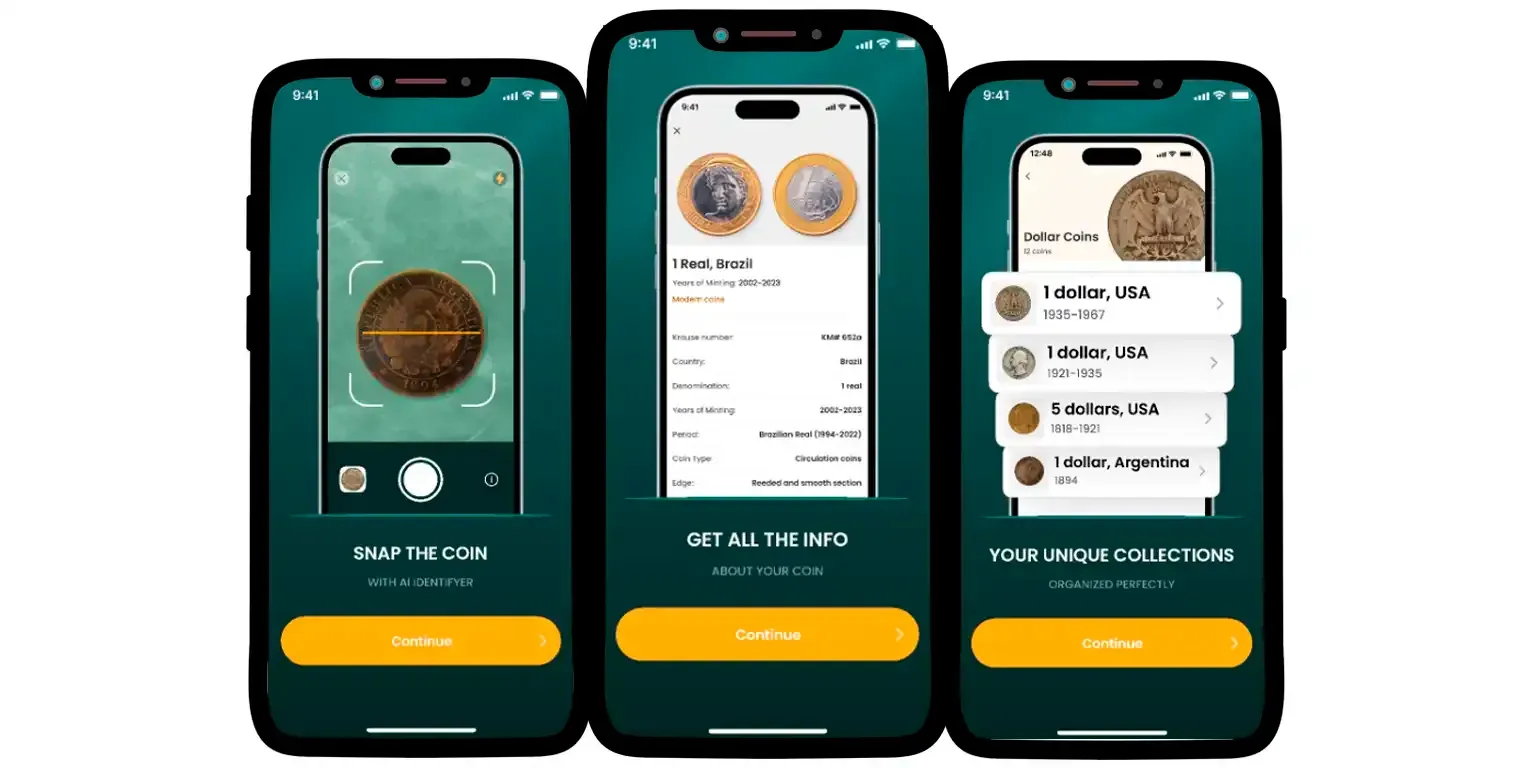
4. 1974-S Proof Penny
Auction Record: $1,265
Mint: San Francisco
Metal: 95% Copper, 5% Zinc
Weight: 3.11 grams
Diameter: 19.00 millimeters
Crafted for collectors, proof pennies are struck with polished dies. The result? A mirror-like finish that's nothing short of breathtaking.
Why It's Special: Limited production and superior craftsmanship make proof coins highly desirable.
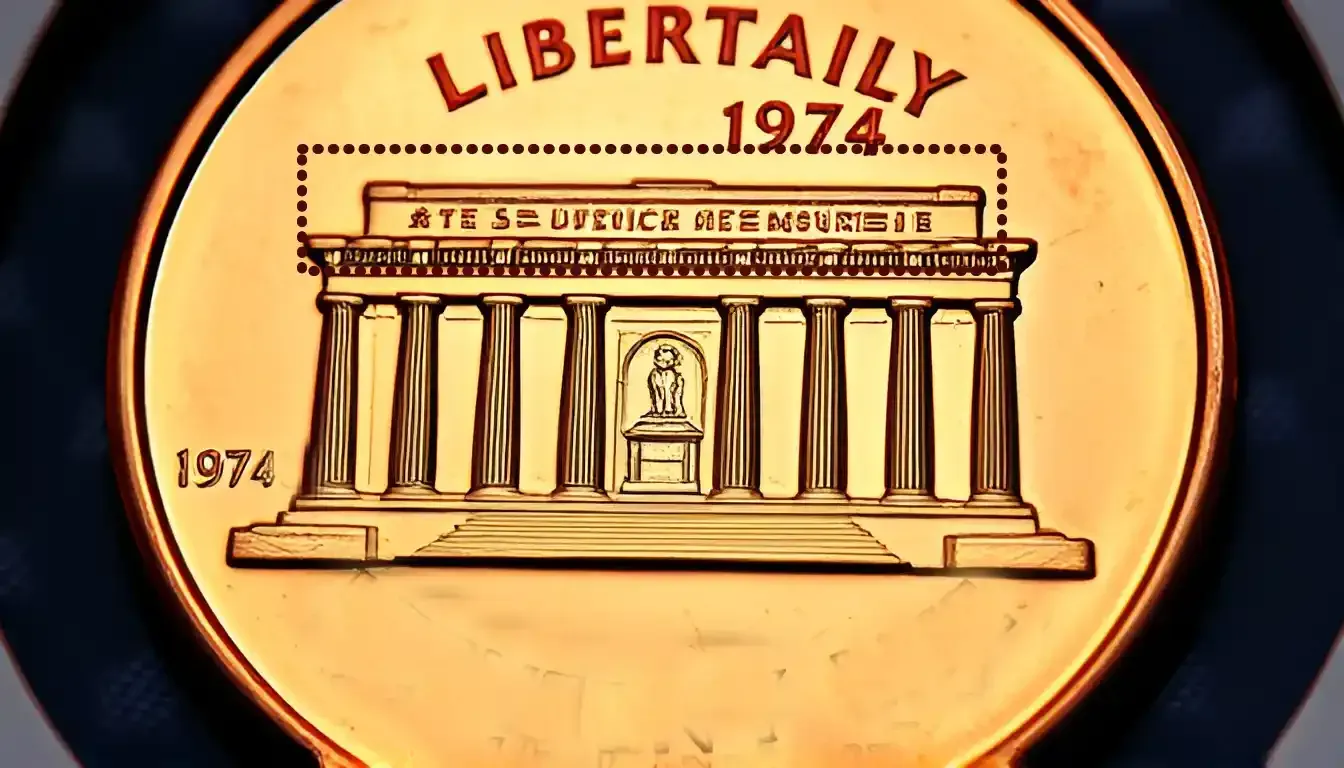
Did You Know?
The 1974 no mint mark penny was produced in Philadelphia. Pennies produced there typically don’t carry a mint mark. So, they are a bit unique and even rare to the eye of a collector.
One cent 1974 precio depends on whether it's a 1974 D penny, 1974 no mint mark penny, or a rare error penny. Some auction prices can go as high as several thousand dollars.
The valuable 1974 penny value often depends on its rarity and condition. A standard 1974 penny D in worn condition might not be worth much, but an error coin from that same year could be priceless!
If you come across a 1974 Lincoln penny with no mint mark, check its condition closely. A pristine, uncirculated version of this coin might fetch a high price at auction.
If you have a coin and don’t know which exactly, try the Coin ID Scanner app. You need just to scan a coin with your phone, and the app will give you the whole information about the piece in your wallet, e.g., its worthiness, dates of usage, mintages, etc.
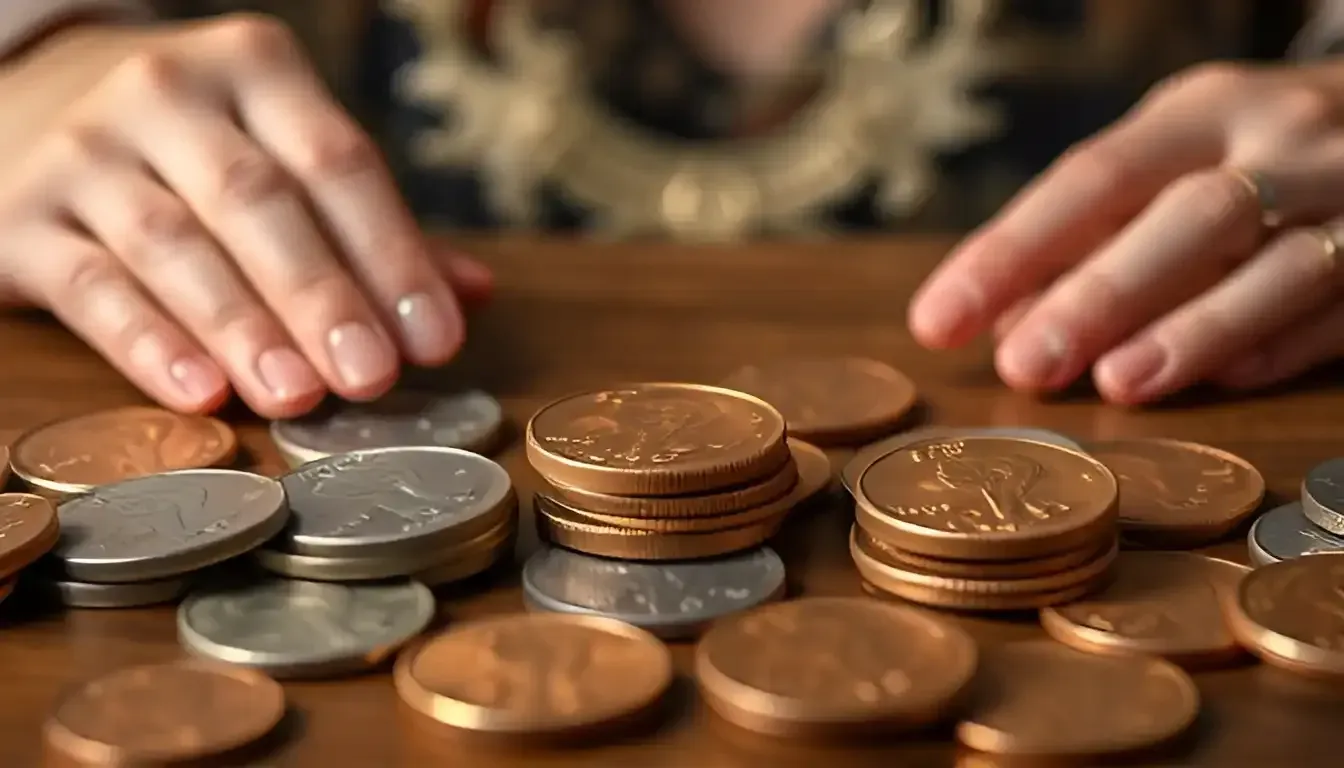
The Most Famous and Expensive Errors
1. 1974 Doubled Die Obverse
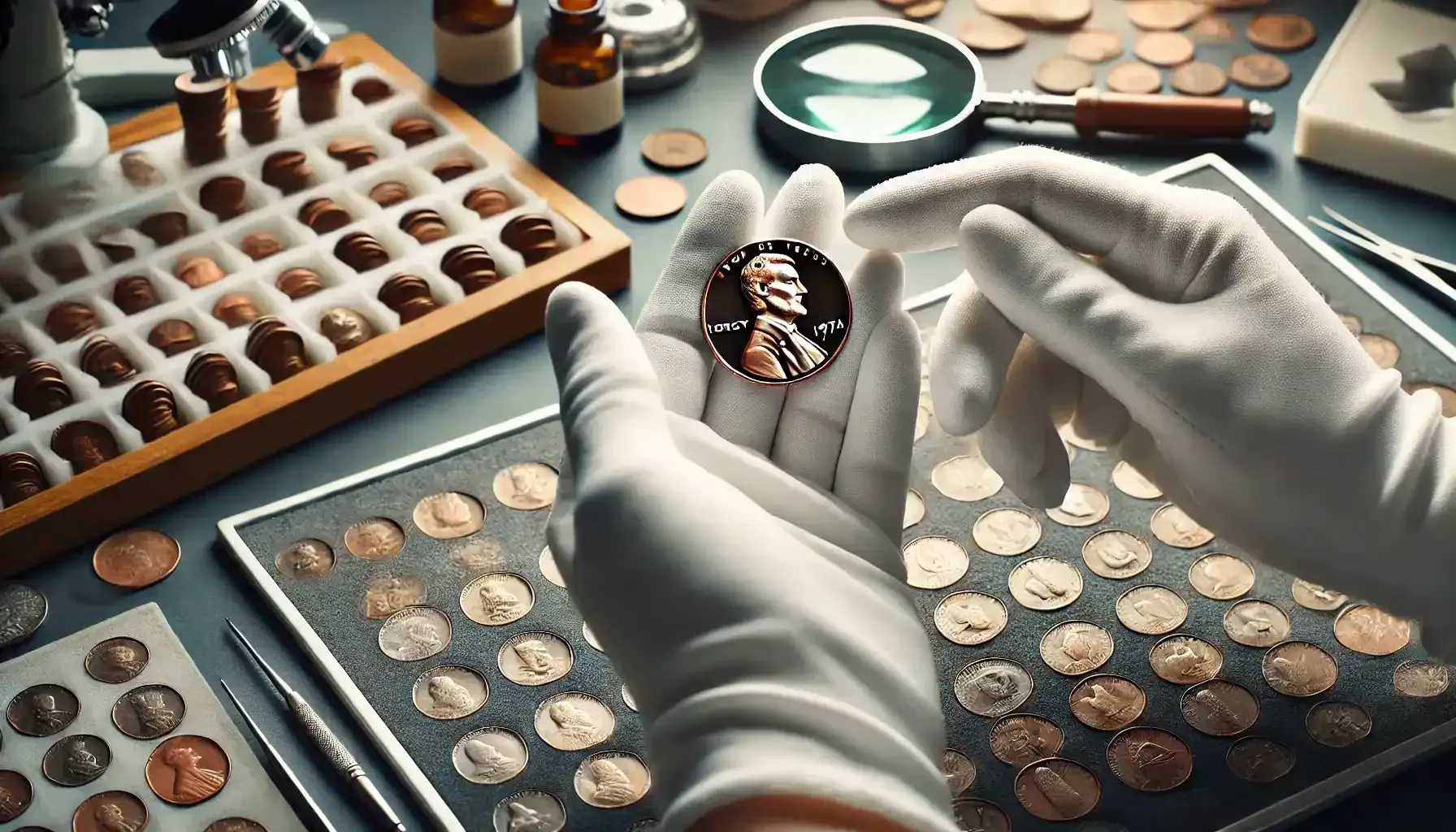
Some 1974 pennies exhibit a doubled die on the obverse (front) side, where the date and inscriptions appear slightly doubled due to a misalignment during the die creation process.
This doubling is subtle but significant. The slight overlap in the lettering or numbers creates a shadow-like effect that's a sign of this rare error.
These pennies can cost from $50 to over $200. Not bad for a coin that's usually worth just one cent!
2. "Floating Roof" Phenomenon
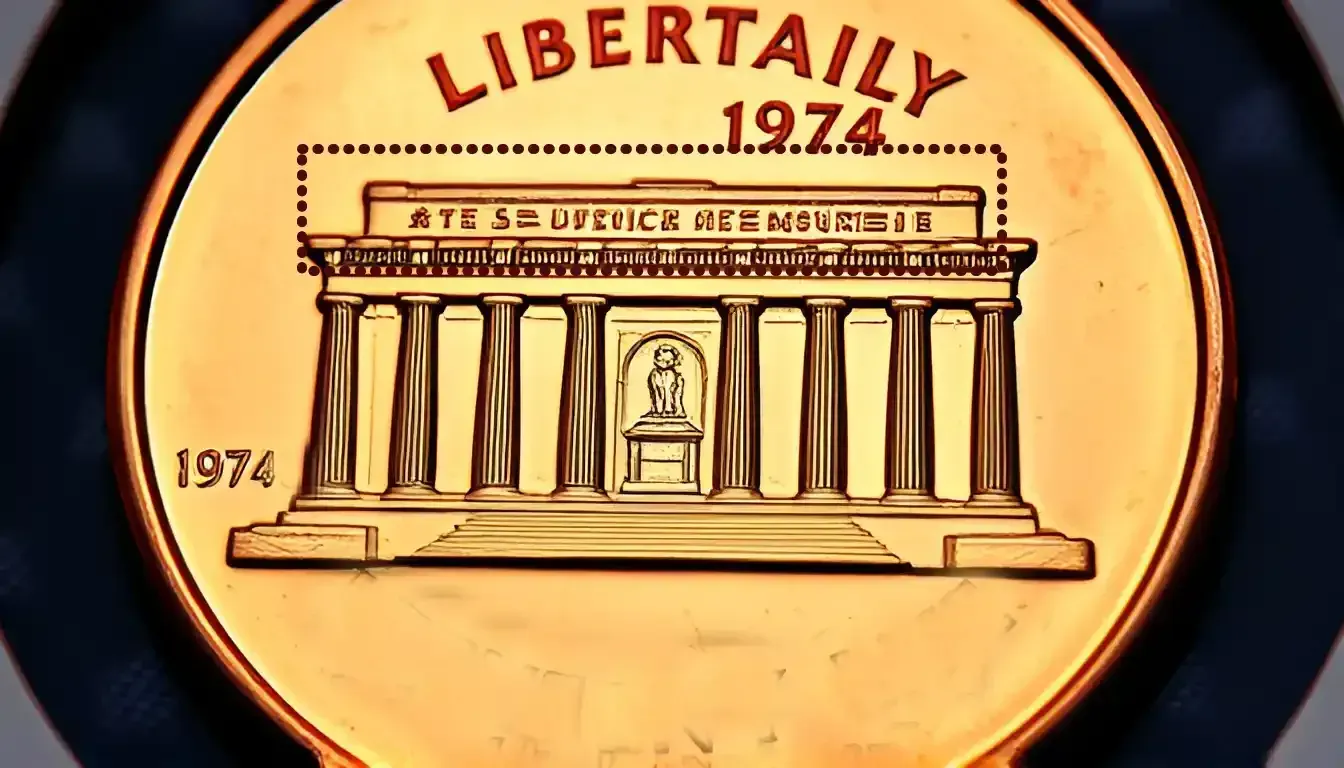
On some 1974 pennies, the roof of the Lincoln Memorial appears disconnected or "floating" above the pillars due to over-polishing of the die.
This visual anomaly turns a common design element into an error that catches the eye and sparks conversation among collectors.
It is not as valuable as some errors. But a "Floating Roof" penny in excellent condition can bring in $5 to $15.
3. Grease-Filled Die Errors
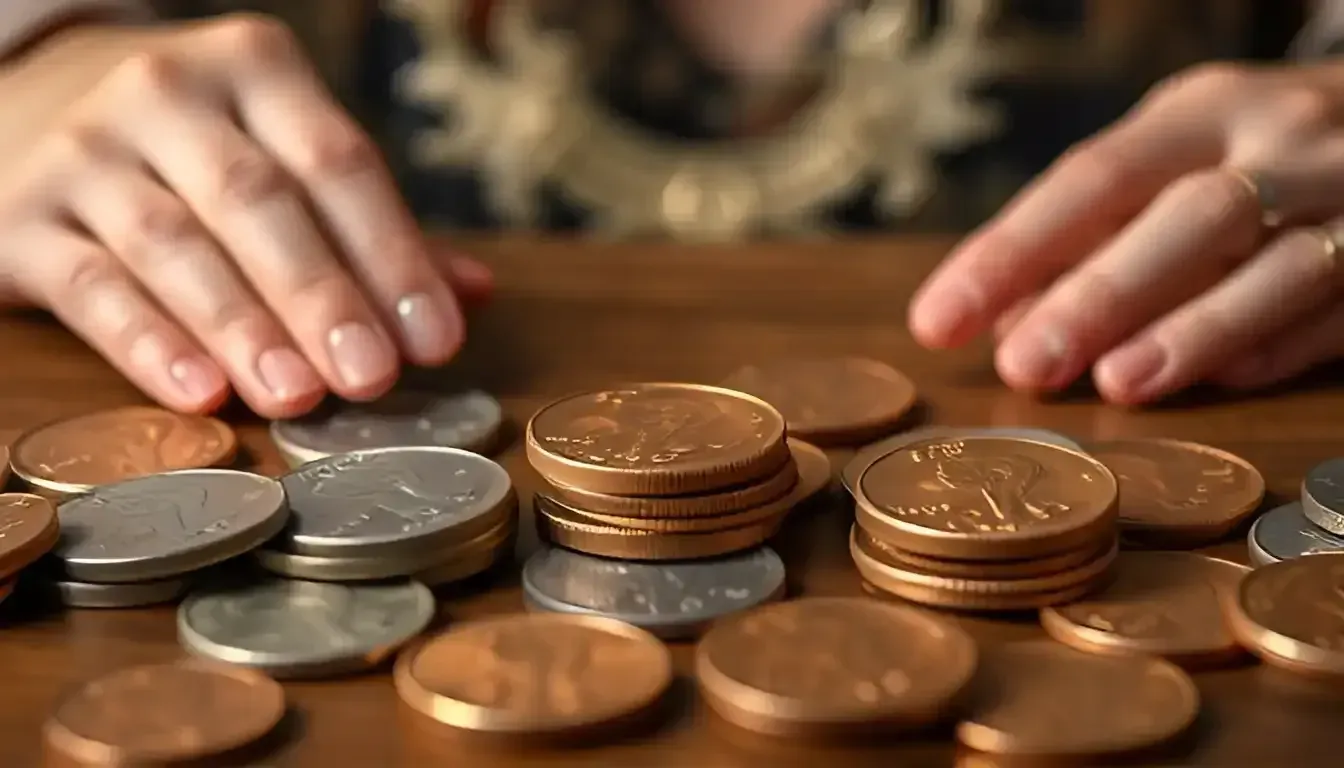
Occasionally, grease or debris fills the die, causing certain letters or numbers to be faint or missing on the struck coin. Commonly affected areas include the motto "IN GOD WE TRUST" or "LIBERTY."
These errors create variations that are interesting for many collectors. The price depends on the severity and uniqueness of the error - between $10 and $50.
4. Off-Center Errors
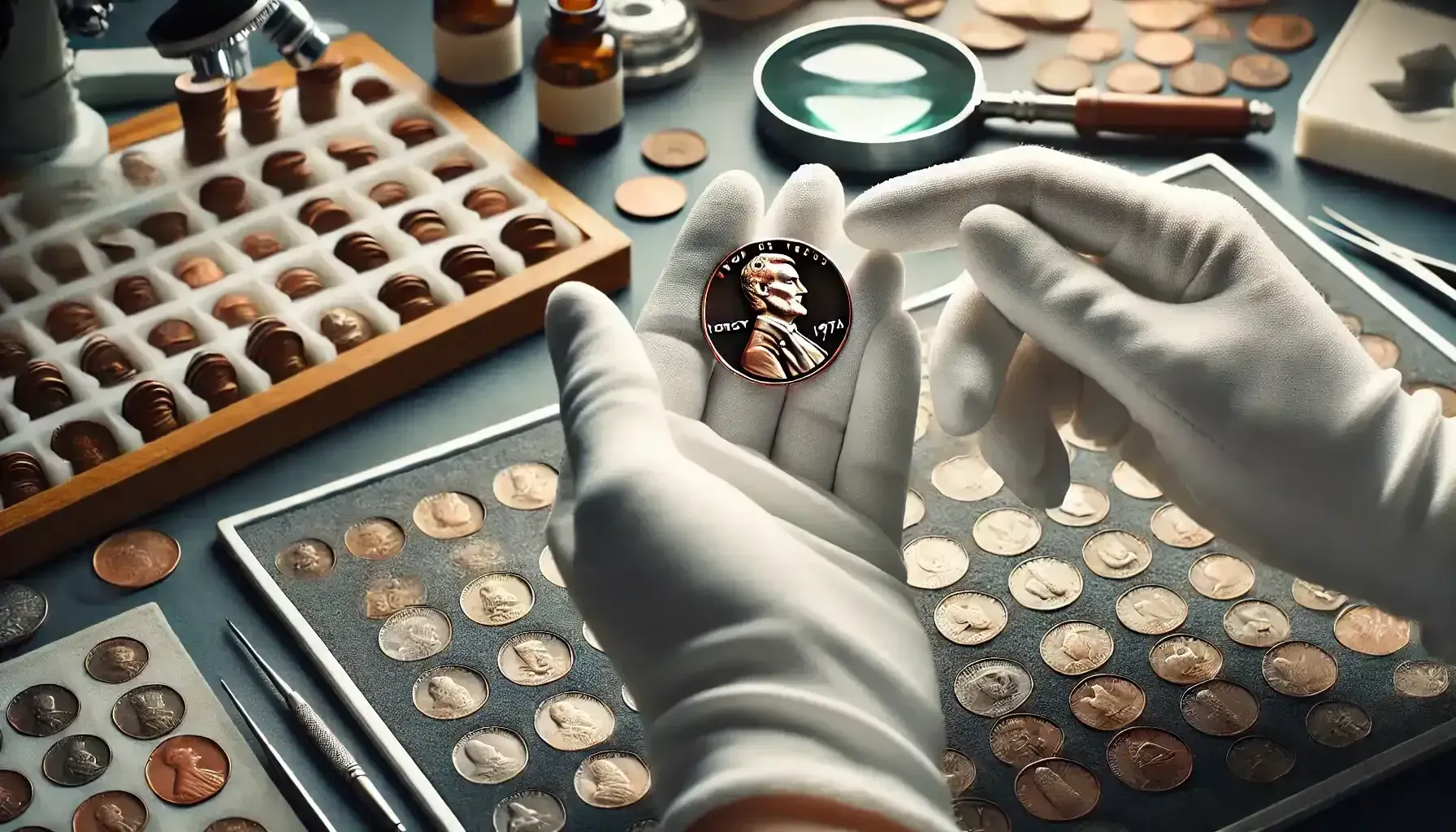
Off-center strikes occur when the coin blank (planchet) isn't properly aligned with the dies during minting. The result is a coin that's not fully imprinted with the design.
The more off-center the strike (while still showing a date), the rarer and more valuable the coin becomes. A 1974 coin struck 10% to 15% off-center might be worth $10 to $20, but one that's 50% off-center with a visible date could command $100 or more.
5. Clipped Planchet Errors
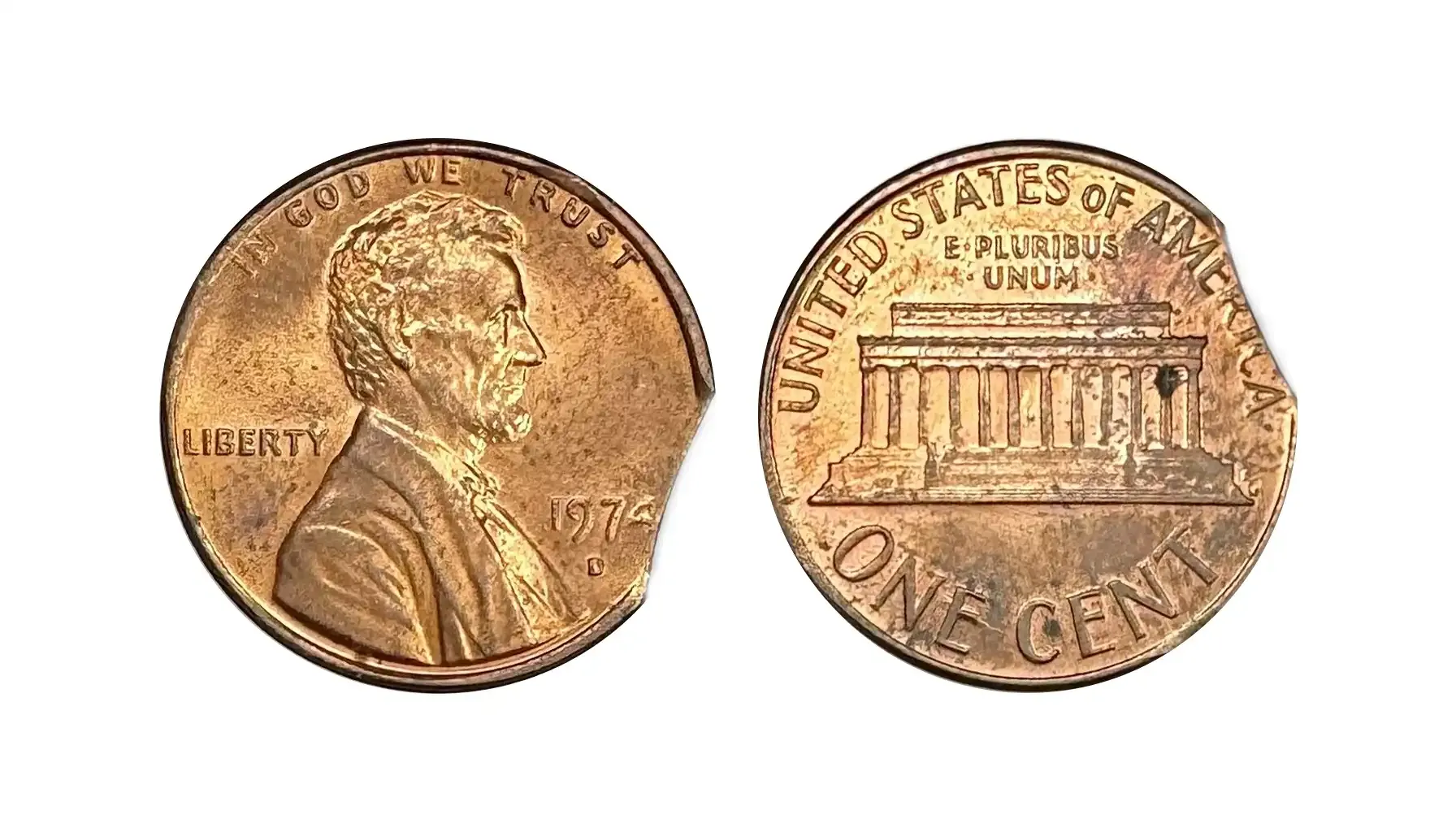
A clipped planchet error happens when the metal blank is improperly cut. This leaves a curved or straight edge missing from the coin.
These coins look like someone took a nibble out of them. The unusual shape makes them stand out in any collection. A 1974 piece with a noticeable clip can be valued between $15 and $35.
6. Die Breaks and Cuds
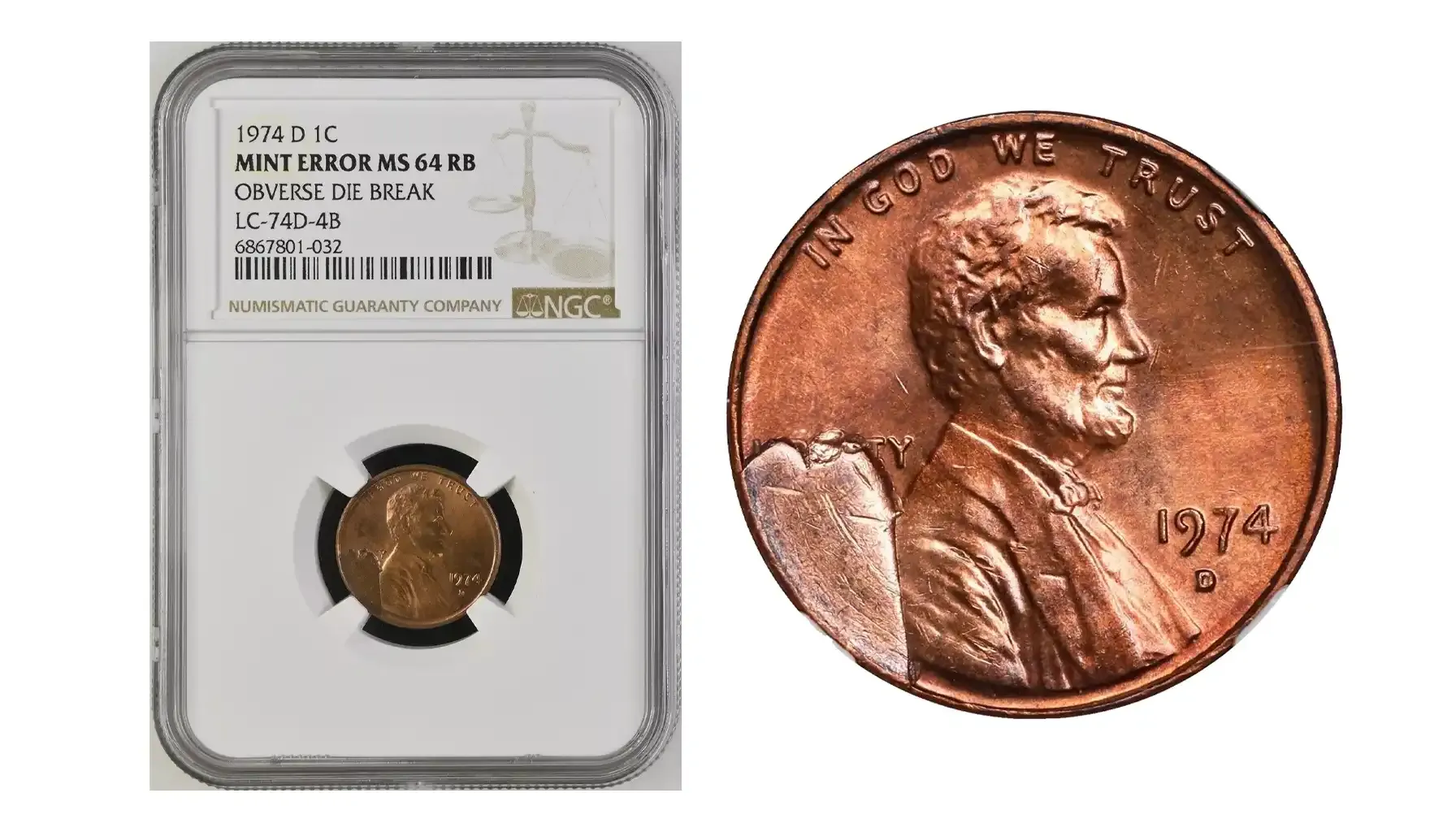
Die breaks, also known as "cuds," occur when a piece of the die breaks off, leaving raised lumps or missing design elements on the coin.
Each die break creates a pattern that makes every affected coin one-of-a-kind. Depending on the size and prominence of the die break, these pennies can range from $10 to $50 in value.
7. 1974 Aluminum
In response to rising copper prices, the U.S. Mint experimented with aluminum pennies in 1974. While over a million were produced, they were never released for circulation and most were destroyed.
Only a few specimens are known to exist, and owning one is both a legal and numismatic grey area.
One 1974 aluminum penny was offered at auction and estimated to fetch over $250,000, but legal issues prevented the sale. If one were ever legally sold, it could be a miracle.
Disclaimer: The 1974 aluminum piece is considered government property, and owning one can lead to legal complications.
How to Spot These Errors
Lighting: Good lighting can help reveal errors like doubling or repunched mint marks.
Magnification: Invest in a quality magnifying glass or jeweler's loupe (10x magnification recommended).
Know What to Look For: Familiarize yourself with common error types and where they might appear on the coin.
Care: Use gloves to prevent oils from your skin from affecting the coin's surface.
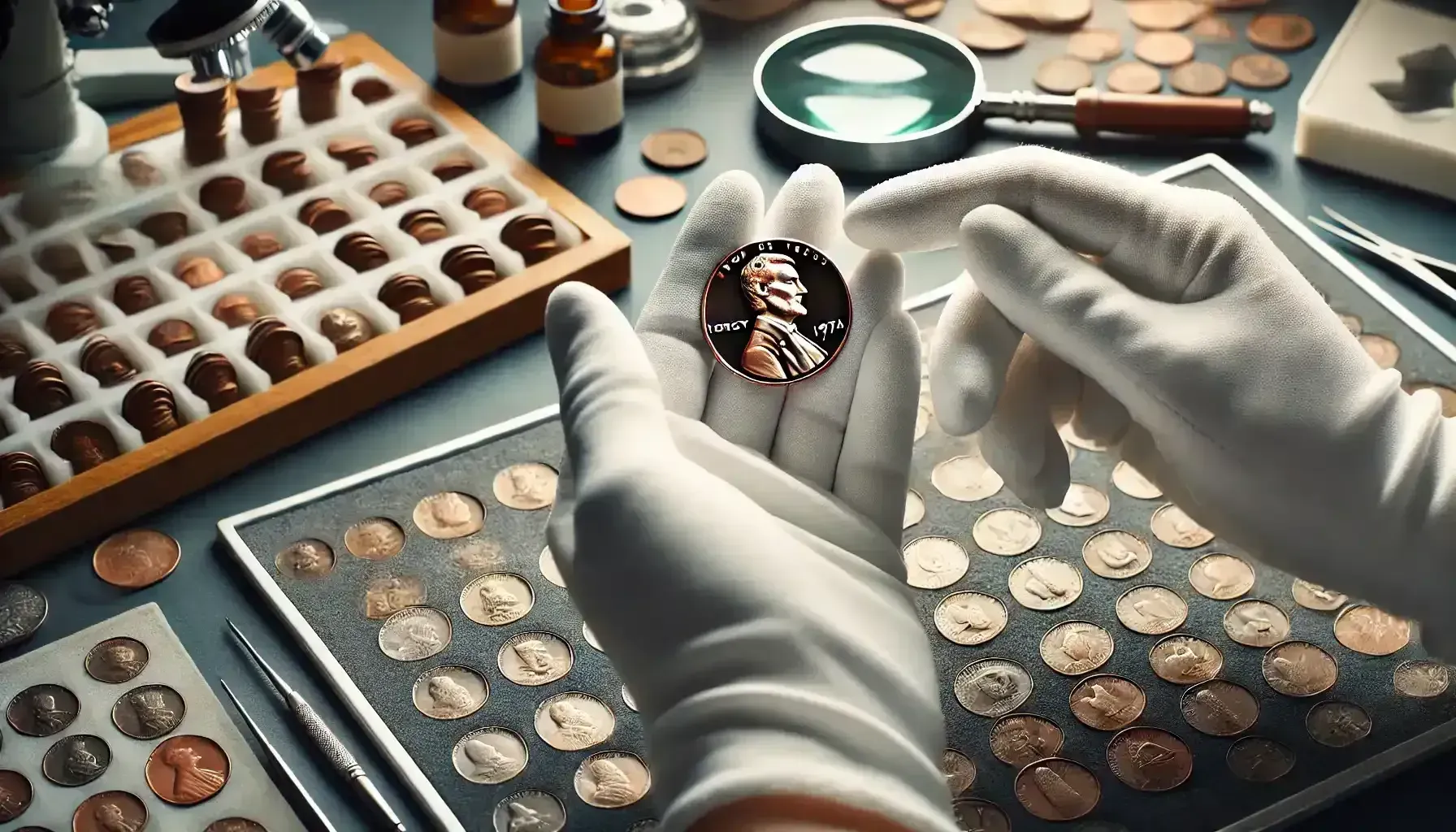
Should You Hold on to Your 1974 Pennies?
So, what should you do if you find a 1974 penny? First, check for a mint mark—does it have the “D” mark or no mint mark at all? Secondly, examine its condition. A pristine 1 cent 1974 in excellent condition is far more valuable than a worn-down coin. Lastly, research the value and see if your coin is part of the rare group.
In conclusion, it doesn’t matter which coin exactly you have—these coins are worth a closer look. You never know—you might be holding a rare piece of history that’s more valuable than you think! Then check it out right now, and the Coin ID Scanner will help you.

